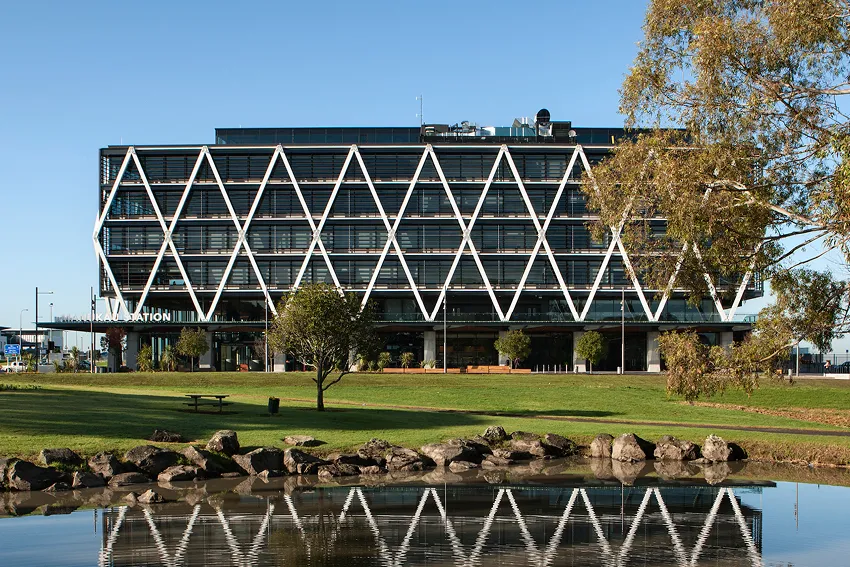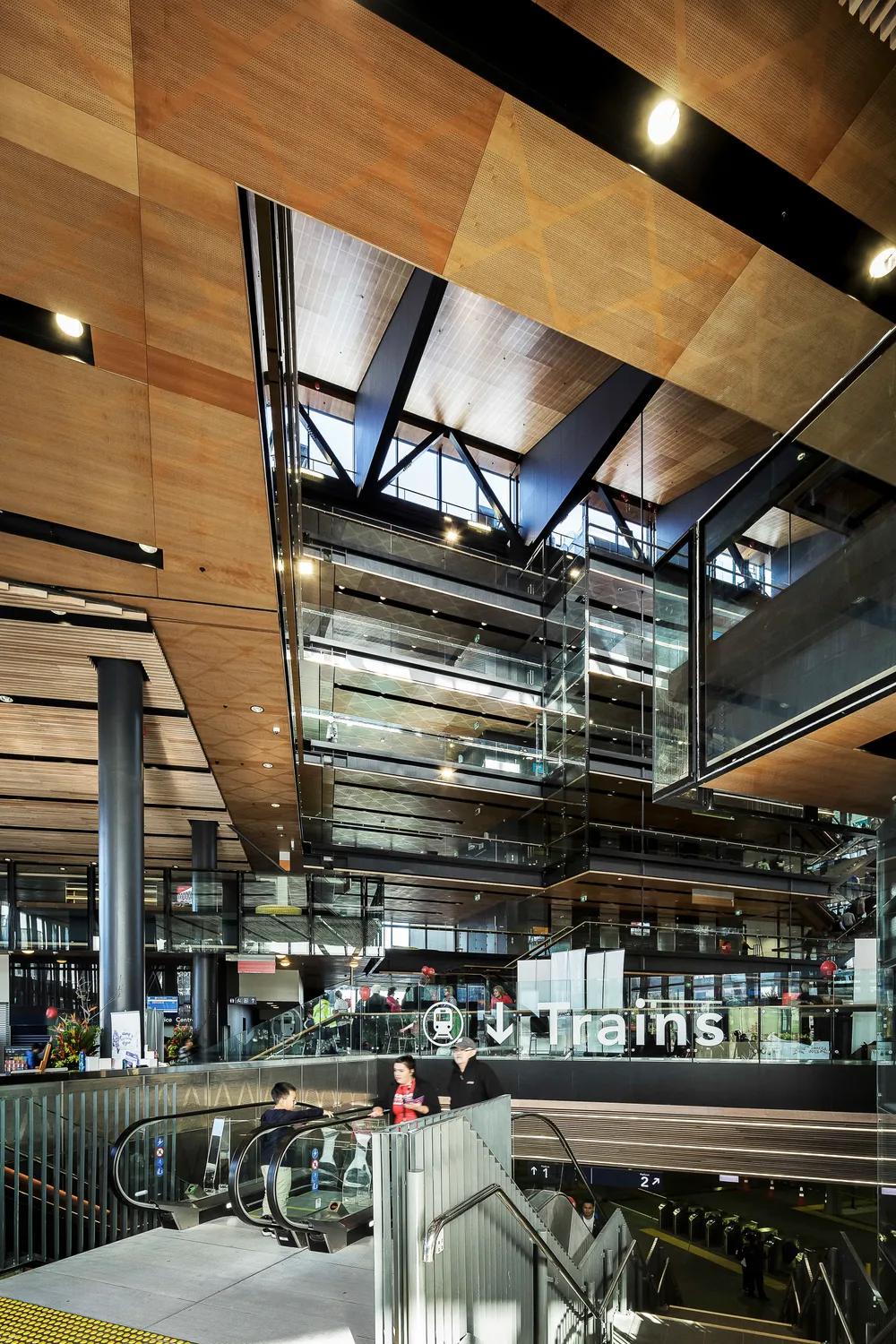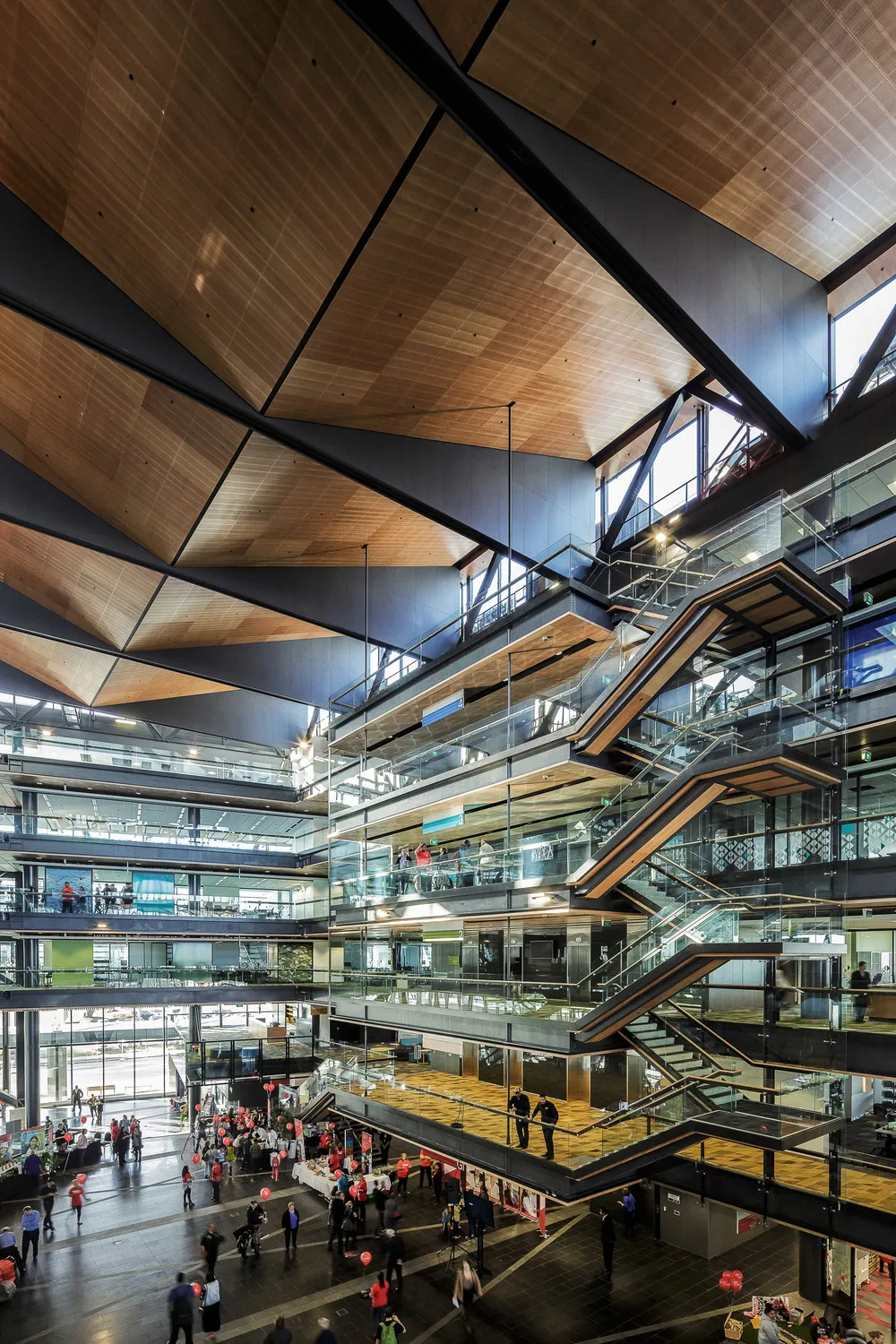NewsPerspectives
Live and Learn
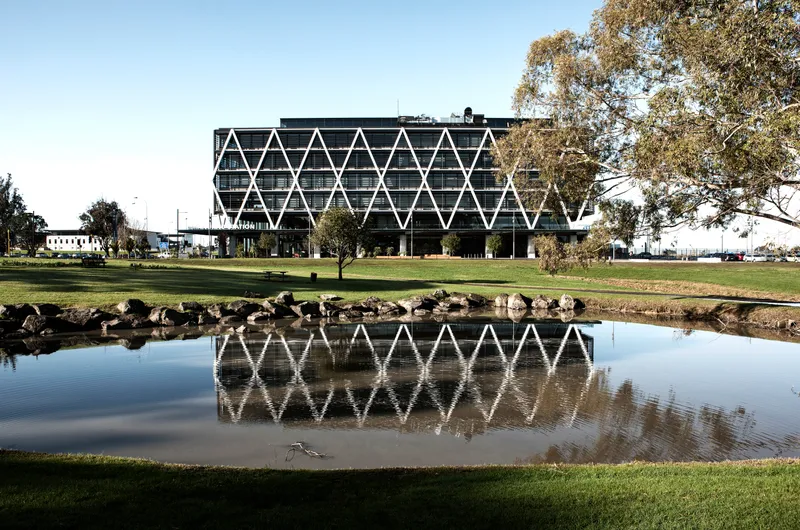
The educational landscape is swiftly transforming. Compared with five years ago, prevalent thinking about pedagogy is accelerating in diverse new directions.
It’s an ever-changing evolution. But while commercial organisations have the capacity to rebuild, educational buildings need to last a distance of decades. These permanent structures have to be flexible and malleable enough to evolve with the next century of education, without limiting new methods of learning we might discover, new technologies we might assimilate.
Universities are simultaneously becoming both hyper-local and global. There’s fierce competition to engage the best and brightest minds from around the world, while also developing an inclusive approach to better the prospects of people in surrounding communities to enable their learning too. World-class research facilities collide with open, accessible spaces; enclosed laboratories are suddenly exposed to the public.
These new demands have created new opportunities for the design of tertiary institutions. Over the past half century, Warren and Mahoney has been at the forefront of this revolution, designing educational buildings within Australasia and abroad. From briefing to stakeholder engagement, planning to change management, Warren and Mahoney’s expertise in psychology and process has shaped innovative solutions, and helps write the theory for the future of tertiary education design.
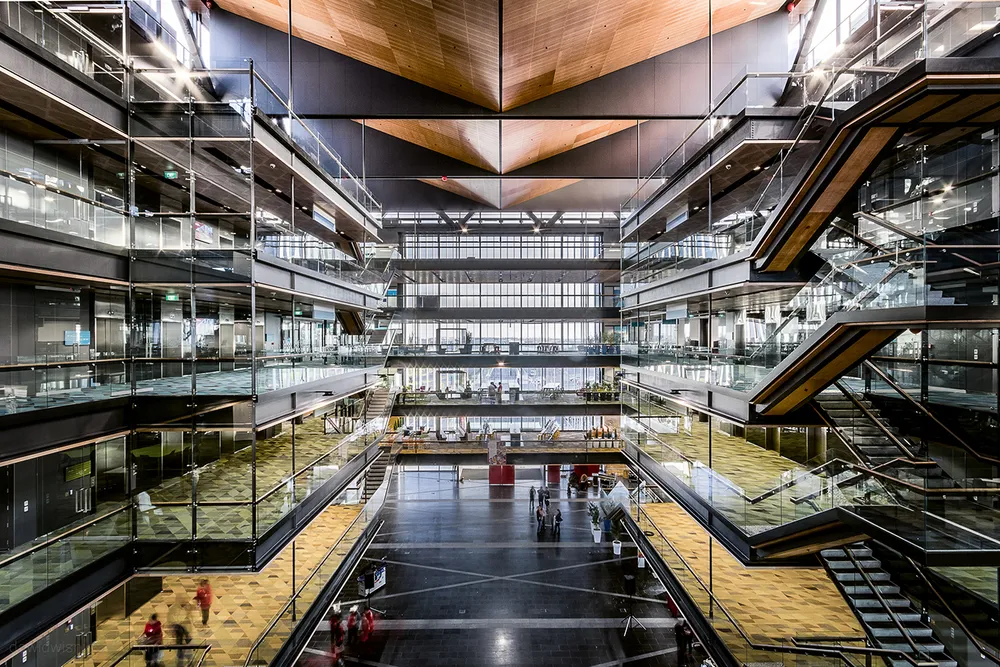
THE THINKING
—
Nicole Stock, editor, in conversation with Andrew Barclay and Blair Johnston. —
NS What was MIT’s brief to you at the beginning of the project?
BJ There are two parts to any brief. There are the functional requirements – how big the building will be, what it needs to contain – but there’s also a strategic intent. MIT’s strategic intent was to open up the possibility of study in the minds of their local community. They want to improve the educational outcomes for people in South Auckland. That high-level philosophy is driven right down through every design decision of the building.
AB I remember the interview. We stood on the lecture theatre stage; Dr Peter Brothers and his staff were in the students’ seats. After the presentation, Dr Peter asked the vital question: “How would you link the advancement of this community with developing pedagogy?” It was a very loaded question because that’s exactly what the project needed to deliver. The brief was to mash those two worlds together. It’s about encouraging people to engage with education.
BJ I think this project is almost entirely about eliminating thresholds. MIT Manukau is more than just a building. It aims to break down barriers between public and private realms: between the streets and the educational institution, but also within MIT itself, eliminating thresholds between learning and social spaces.
The real hope is that this building can transcend its physical form and change how people enrol in and engage with education in South Auckland. Architecture as an instrument of social change is a grand ambition, but one that is within reach at Manukau.
The biggest design decision we made was to embed the station completely, seamlessly, within the heart of the MIT building.
There is the possibility to break down, through sliding doors, the teaching spaces. It’s actually just playing with the extension of a real-life workplace.
